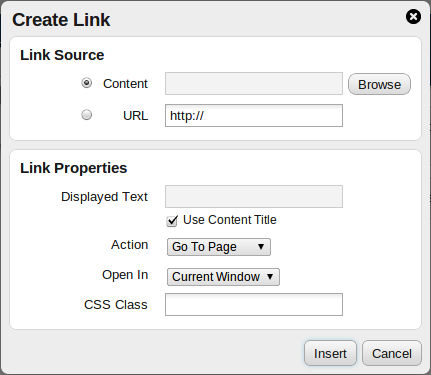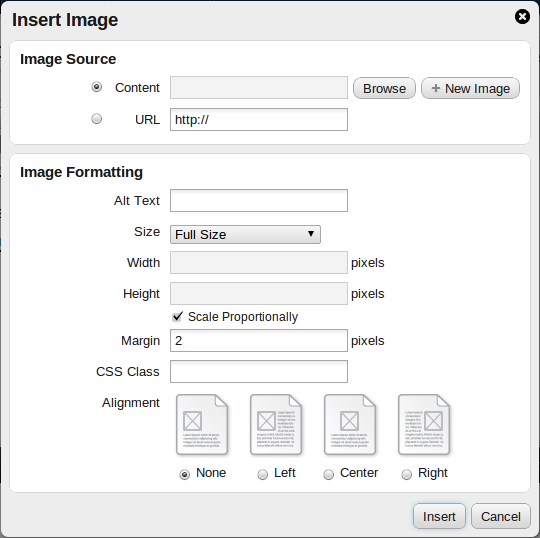When you edit content in an editor element, a tooltip containing WYSIWYG controls appears, allowing you to style and manipulate the element's content in a number of ways. Most of these controls require you to first select some text, then operate the control. Hover your mouse over each of the numbered callouts to highlight the associated area of the tooltip.

The Create Link dialog appears when you click the Link control in the WYSIWYG tooltip.

The Insert Image dialog appears when you click the Image control in the WYSIWYG tooltip.

![[Note]](images/note.png) |
Server-Side Image Resizing |
|---|---|
If the web server hosting Chronicle has a supported PHP image library installed (see Chapter 16, Image Manipulation for more details), local images with a specified width/height are resized on the server to minimize data transfer and improve page load time. |